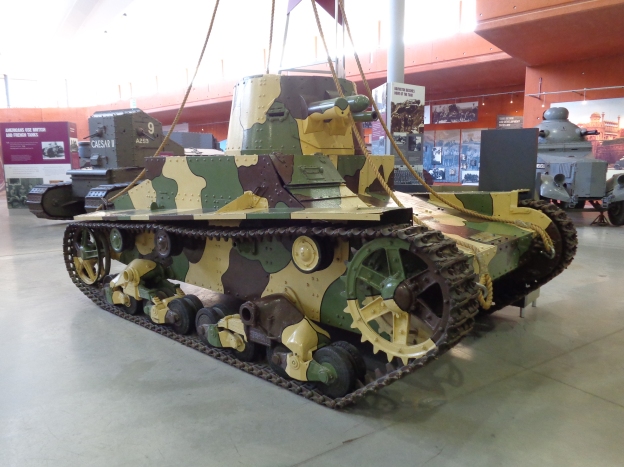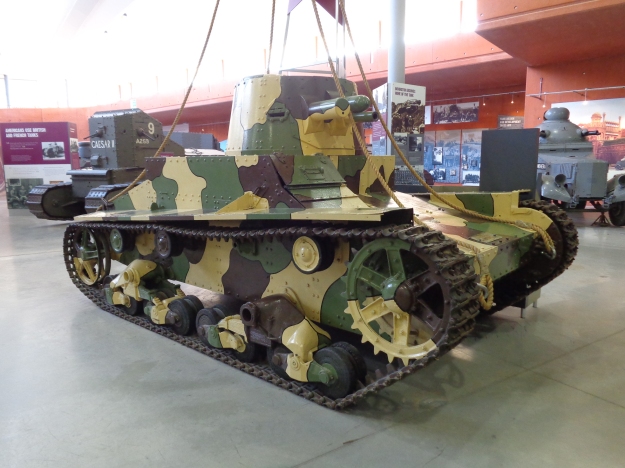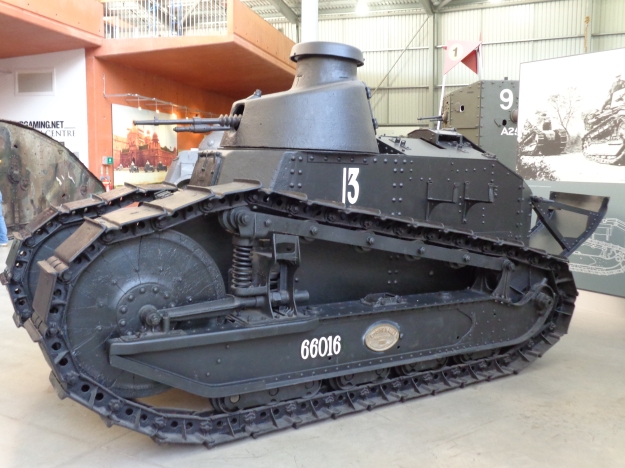On the last Monday of Febuary I managed to get another Flames of War game in, it has been a while and I have been losing my edge even as I try to prepare myself for the upcoming tournament. I had initally asked on the forum if there were any late war players available as that is more relevant for the tournament but none came forward. So I had to go for an early war game with Liam, who has a certain foundness of Italian tanks.
While some feinschmeckers will notice that Italians never deployed a tank division to Russia, and thus Italian tanks versus Russian Strelkovy in 1941 is not very likely, it still made for a good game.
The Italian forces that invaded Russia was known as the CSIR (expeditionary corps in Russia). It consisted of three divisions, two motorized and one cavalry division, while officially motorized, the trucks used for motorizing was commercial trucks pressed into service and many of them lacked the durability to withstand the strains of military campaigning. The cavalry division however did contain a single tank battalion equipped with Fiat light tanks and tankettes. To the best of my knowledge these did not fight as a battalion but was split up to support various other elements, hence our little battle is unlikely but not impossible. In 1942 the CSIR was expanded to the Italian 8th army also known as ARMIR (Royal Italian Army in Russia), this was done by adding 7 purely infantry divisions thus creating the enduring image of the poorly equipped Italian soldier fighting on foot.
Army Selection
I am not really active in the Early War period of the game, while I have bought all the books, I have only played a few games. As I am a late war gamer, I had to go with something that could be transferred; it left out my tank forces, so it had to be either Russian or British infantry. With my Soviets already being midwar (and actually based on Naval Infantry although using regular strelkovy models), I felt those were the most appropriate. As I do not have all the weird and wonderous early war Russian tanks, I was limited to Barbarossa for T-34 or KV tanks for support (and I wanted some tanks). The next option is choosing which infantry list to play, there are actually 5 variants; motostrelkovy with their motorized and mechanized support, and 4 variants of the Strelkovy rifle battalions, guards, red army, militia and red banner. As this is my first game going into early war with the Soviets I wanted wave attack as that is the most iconic special rule to me, that eliminated red banner and motostrelkovy. Also militia feels basically as a flavour version of red army (with more limited options and no real advantages). So I chose the confident conscript version instead of the fearless as I wanted to flood the battlefield with cheap troops in waves.
The first thing I then noticed was that strelkovy companies are larger and contain more teams in the early war than late war version which actually limited my choices as I could not take 2 big companies but had to take 3 smaller companies for my core troops. In the anti-tank department I chose 4x 45 mm AT guns and a small 2x gun 76 mm tank destruction company (which I really wanted bigger but found prohibiting expensive). 4x 120 mm mortars provided my artillery and 2 KV-1s would be my anchoring point as I thought they would be almost invulnerable but I really put a lot my trust in wave attack of my strelkovy to win the day.
Deployment
We rolled the “Dust Up” scenario and I understood I was up against a horde of Italian tanks with 3 tank platoons, 1 tankette platoon, AT guns, self-propelled AA, light howitzers and an infantry platoon supported by sporadic air support. The scenario has delayed reserves and I imagine the scenario is more or less two spearheads running into each other with supporting units coming up on the flanks. I had 7 platoons, so I need to put 4 in reserve. On the table I chose to have an infantry platoon which was strung out to cover both objectives (a risk but I figured a very aggressive use of reserves would take pressure of the defending platoon), my mortars in support and my tank destruction company because it is heavy and not easy to move in an overwatch position. I deliberately picked the corner with the least cover to give a better overwatch position while counting on my infantry to dig in and conceal themselves. The KVs were in reserve as I wanted to be sure my opponent had exhausted some of the air support as that was the only thing that could seriously harm them.
My opponent chose to deploy two tank platoons to do a sweep around my far flank (the same direction as from which his supporting reserve units would arrive) and tankettes in the middle likely counting on their speed to stay out of harm’s way.
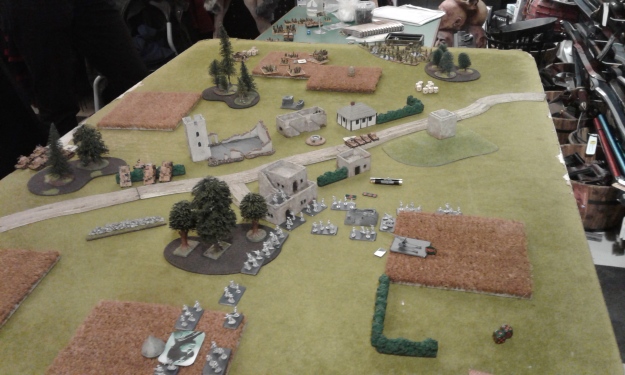
Early Game – Turn 1-2
The first turns were rather uneventful. My infantry dug in while two air strikes and a bit of an artillery duel took out my mortars and 1 of my antitank guns which continued to fail to dig in. The tanks (slowly) moved forward to threaten the furthest away objective which was also the more lightly defended one and the tankettes came up in the middle preventing my from redeploying my infantry unless I was willing to suffer the full weight of machine guns which conscripts in the open should fear. The Italian howitzers dug in.
Midgame – Turn 3-5
On turn 3, I rolled for reserves and one platoon arrived. My plan was to bring up an infantry platoon in order to get them in the combat, I deployed them as close to the enemy as possible in order to push an objective, overrun his artillery and threaten my enemy and try to force him to pull back tank platoons which would take pressure of my defending platoons which had taken more of a beating than I had hoped due to their inability to dig in on turn 1. I throw my infantry forward as it arrived. Even though the tankettes presented a tempting target, I held fire with my remaining AT gun as I wanted it more of a threat and did not want to give it away. But my defending infantry platoon managed to bail a tankette.
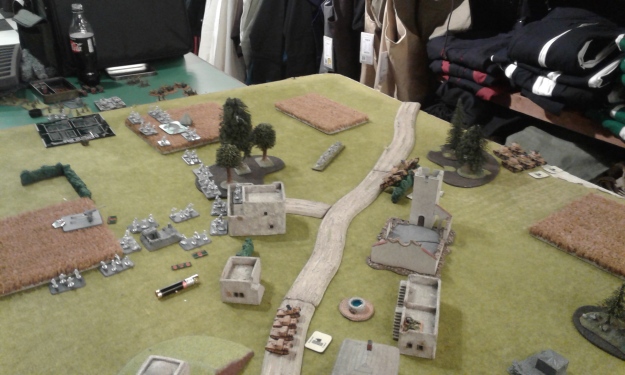
In my opponent’s turn, he did not receive air support or reserves. He pulled back the tankettes but they could not reach my platoon with much machine gun fire. The furthest away tank platoon decided to double back. The artillery fired a bombardment at the advancing infantry and I managed to fail 6 infantry saves of 10 hits.
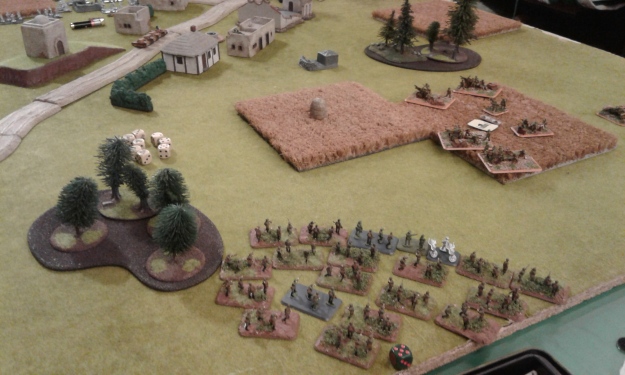
In turn 4, I received reinforcements and decided to broing up my small AT guns to create a killing zone for any tanks being forced to pull back across the centre to help out. It was a deliberate choice over the KVs for extra shots as the armour of the tankettes. They managed to bail two tankettes which was pretty poor as they would penetrate the tankettes on all but 6s at long range. My infantry assaulted the artillery and even though taking withering fire managed to come with with quality of quantity. They took out two gun teams and the artillery platoon pulled back. My idea was actually to refocus my axis of attack to the objective centre of the board as it would come under AT cover from my advancing light AT guns. But before I got my 5th turn my infantry was mowed down in a bombardment followed up by the tanks which saw 10 hits and 7 failed saves and the platoon failing their motivation test and taking the CiC with them and failing wave attack. Which is very much where I failed the game as I could not keep the pressure up.
At that time my opponent got a reserve unit which was another tank unit which rushed to threaten my far objective. Finally my KVs came on as I wanted to use them for force the objective but my opponent’s reserves arrived and I needed to deal with my left flank.
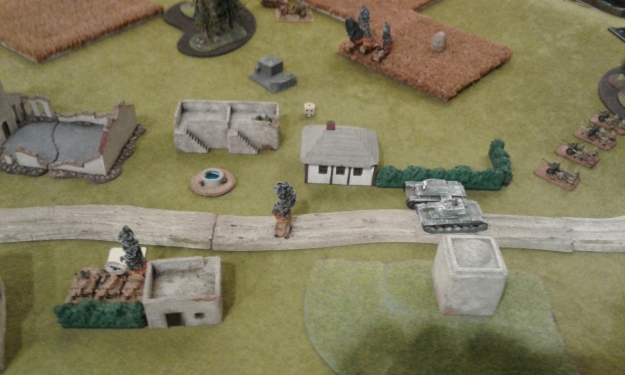
Late Game – Turn 6-8
The whole late game I was playing catch up with more and more of my opponent’s reserves arriving against my beleguared defending strelkovy platoon, as a tank assault forced it away from the objective, I could only feed more and more infantry teams into the grinder in order to contest the objective.
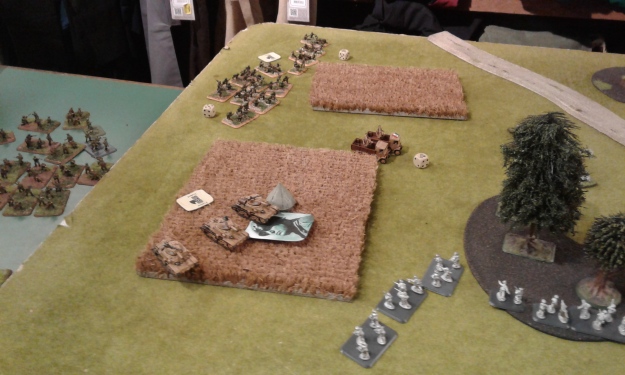
I actually at one point had an opportunity to do some serious damage as my defending strelk could have assaulted the middle tank platoon that had been bold enough to move into the centre as it was within 4″ of infantry concealed behind/in buildings and thus would have been unable to perform defensive fire but at that time the infantry decided to stay pinned and kill their own commisar instead. My KV moved to help but where too slow.
With more and more units arriving, I could not hold back and with Italian tanks having too many machine guns and the Russians having no smoke, I could not launch attacks and was slowly pushed back.
Conclusion
Regardless of all the jokes about Italian tanks, when facing unsupported infantry they are absolute fantastic and with far more machineguns than their typical opponents.
I feel my basic battle plan was sound with a maybe a bit untraditional mix of reserve units with infantry and AT guns to cover each other but I did not receive much luck to succeed with the plan. On my defensive, I surely put too much trust in conscripts, the inability to complete dig in rolls should have been expected but I failed to do so. I should likely go for bigger but fewer units next time. The KV tanks as could be expected never earned their points but I like them for the threat and worry they pose as they are virtually indestructible.
I know the commisar would not be happy but he is dead anyway, killed by a stray bullet fired from somewhere behind the lines.




